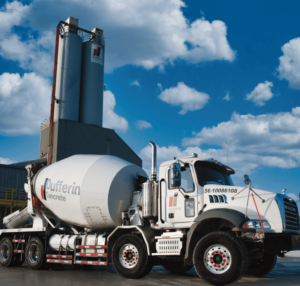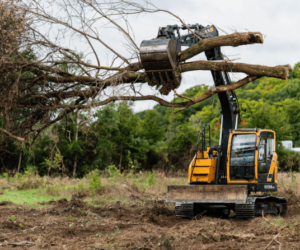Connecting the Countryside Finding the Best Rural Internet Options
In today’s digital world, internet access is no longer a luxury—it’s a necessity. From education and healthcare to business and entertainment, every aspect of modern life depends on reliable internet connectivity. While urban and suburban areas typically enjoy high-speed broadband from multiple providers, rural communities often face challenges accessing fast, dependable internet. Fortunately, there are now more options than ever for those living outside the city limits. If you’re seeking the best rural internet, you’ve come to the right place.
Why Rural Internet Matters More Than Ever
The pandemic accelerated the global shift to remote work, telehealth, online learning, and virtual collaboration. For rural residents, these changes highlighted the need for fast and stable internet. Lack of access can create a “digital divide,” making it harder for rural families to compete economically or socially with those in more connected regions.
High-speed rural internet isn’t just a convenience—it’s a game changer. Farmers can use smart technologies to monitor crops, rural students can keep pace with their peers, and small-town entrepreneurs can run e-commerce businesses from their homes.
What Makes Rural Internet Different?
Rural areas present unique challenges for internet service providers (ISPs). Sparse populations, rugged terrain, and limited infrastructure make traditional broadband expansion costly and time-consuming. That’s why rural internet often comes through alternative technologies like satellite, fixed wireless, DSL, and 4G/5G networks.
Each of these has its strengths and weaknesses, but thanks to innovation and investment, many rural Americans now have access to fast, affordable internet—often bundled with TV and phone services for added value.
Top Rural Internet Options
Here’s a look at the most common types of rural internet and what you can expect from each:
1. Satellite Internet
Satellite internet is available virtually everywhere, making it one of the most popular solutions for remote areas. Providers like HughesNet and Viasat deliver service via satellites orbiting the Earth, which beam internet to a dish installed at your home.
Pros:
- Wide availability
- Suitable for web browsing, email, and streaming
Cons:
- High latency (delay) due to satellite distance
- Data caps and slower speeds during peak usage
2. Fixed Wireless Internet
Fixed wireless uses radio signals to transmit internet from a local tower to a receiver on your property. It’s faster and more stable than satellite, with lower latency and no need for underground cables.
Pros:
- Faster speeds than satellite
- Good for video conferencing and streaming
Cons:
- Requires line of sight to the tower
- Availability depends on tower proximity
3. DSL (Digital Subscriber Line)
DSL uses existing telephone lines to deliver internet. It’s often available in small towns and some rural areas, offering better performance than satellite or fixed wireless.
Pros:
- Consistent connection
- Widely available in developed areas
Cons:
- Slower speeds compared to cable or fiber
- Distance from the central office affects performance
4. 4G/5G Mobile Internet
Many rural residents rely on mobile hotspots or home routers powered by 4G or 5G wireless networks. These offer good speeds where cell signal is strong, and can be a great solution when wired options aren’t available.
Pros:
- Portable and flexible
- Great speeds in areas with strong signal
Cons:
- May have data limits
- Speeds vary based on location
Choosing the Best Rural Internet Provider
Finding the best rural internet depends on your location, usage needs, and budget. For rural residents in the U.S., Fast Broadband Now is a leading source for comparing rural internet providers and packages.
Fast Broadband Now specializes in connecting underserved areas with dependable, high-speed options tailored to rural needs. Whether you’re streaming Netflix, running a home-based business, or attending virtual classes, they help you find the right match.
Why Choose Fast Broadband Now?
- Rural-Focused Plans: Their curated packages are designed for rural living, offering the best speeds and reliability available in your area.
- Affordable Bundles: Combine internet with TV and phone services to save money while meeting all your connectivity needs.
- Easy Comparison Tools: Quickly compare providers, speeds, and pricing without the hassle of visiting multiple websites.
- Expert Guidance: Their support team can help you identify what type of connection (DSL, satellite, wireless, etc.) is best for your exact location.
Tips to Improve Your Rural Internet Experience
Even the best internet service can sometimes be affected by external factors. Here are some ways to improve your rural connectivity:
- Upgrade Equipment: Invest in a modern router or mesh system for stronger signal coverage.
- Limit Background Apps: Disable automatic updates and background programs that consume bandwidth.
- Use Ethernet: For critical tasks like gaming or Zoom calls, connect your device directly with an Ethernet cable.
- Schedule Downloads: Download large files or updates during off-peak hours to avoid congestion.
Final Thoughts
Rural residents don’t have to settle for slow or unreliable internet anymore. Thanks to advances in technology and increased provider competition, there are more choices than ever before. Whether you prefer satellite, DSL, wireless, or mobile broadband, the key is finding a provider that understands rural needs and delivers on speed, reliability, and affordability.
If you’re looking for the best rural internet, visit Fast Broadband Now to compare plans and get connected today. With the right provider, even the most remote areas can enjoy the benefits of fast, seamless internet access.













